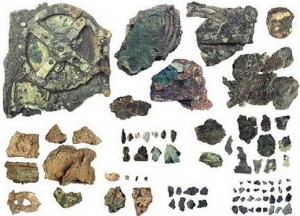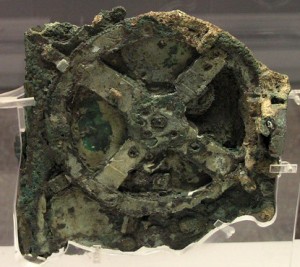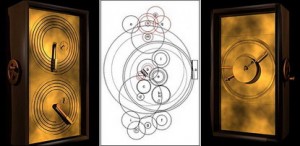 After one and a half years open for visitors, the extraordinary exhibition “The Antikythera Shipwreck: the Ship, the Treasures, the Mechanism” was closed on 31 August/has been prolonged until 2 January 2014 at the National Archaeological Museum in Athens, Greece (www.antikythera-mechanism.gr). Acquainting visitors with the secrets of the most famous “prototype computer” of ancient times, the exhibition put on display the Antikhytera mechanism.
After one and a half years open for visitors, the extraordinary exhibition “The Antikythera Shipwreck: the Ship, the Treasures, the Mechanism” was closed on 31 August/has been prolonged until 2 January 2014 at the National Archaeological Museum in Athens, Greece (www.antikythera-mechanism.gr). Acquainting visitors with the secrets of the most famous “prototype computer” of ancient times, the exhibition put on display the Antikhytera mechanism.
According to Chinese and Greek sources and legends, the first experiments with automatons designed to look and act like humans or animals were done in the 4th century B.C. One of the first such mechanical models included wooden pigeons (Archytas of Tarentum) and snails (Demetrius of Phaleron), and pharaoh Ptolemy II Philadelphus was believed to be in possession of an ancient android. However, the evidence we have of machines, operating on the principles of communicating vessels, date back to a couple of centuries later, take for instance the water clock by Ctesibius of Alexandria, the oil lamp with automatic oil level control by Philo of Byzantium, who also experimented with an automaton producing bird voices, or the bird- and snake-shaped wine filler built by Ctesibius’ student, Heron of Alexandria, who lived in the 1st century B.C.
More complexity was added to automatons and the large-sized water clocks that were constructed in the late years of the ancient Hellenistic period: with the advancement of astronomy and astrology, these mechanisms were designed to indicate the movement of planets, especially that of the Sun and Moon, as accurately as possible. They might have been used to determine the next time for the Olympic Games, which depended on the constellation of stars. On the basis of recent research, the bronze-made Antikhytera mechanism might also have been used for such purposes. The mechanism, of which or something very similar to its type Cicero also made mention, might be considered to be a primitive mechanical computer.

On 17 May 1902, the mechanism was discovered 40 metres deep in the sea, in a Roman shipwreck that had sunk in the 1st century B.C. It was named after the place of discovery, the small island of Antikythera situated between Cythera and Crete.
The mechanism dates from around 140-100 B.C. , however, experts do not agree about the place where it might have been constructed. There are a number of hypotheses regarding who the “father” of the mechanism could have been; some experts suggest it might have been the Stoic philosopher Posidonius of Athens (135-51 B.C.), others say it might have been the astronomer Hipparchos of Rhodes (160-125 B.C.) or the inventor Archimedes of Syracuse (287-212 B.C.). In all probability, it was not Archimedes who had invented the machine, but there might be some indirect connection to Archimedes, and the real inventor could have lived in Syracuse in Sicily. Contrary to earlier theories proposing that the machine was only used in the eastern part of Greece, thanks to high-resolution imaging and 3D X-ray tomography, latest discoveries suggest that the inscriptions of months, earlier believed to be scratches, on the instrument indicate Corinthian origins, which seems to support the proposition that the mechanism was constructed in the north-western area around Corfu or Sicily. Latest technology also helped researchers discover that one of the inscriptions is the name of the town of Nemea, the regular home to the panhellenic (olympic) games.

Stored in a wooden case, the 33cm tall and 17cm wide mechanism possessed 37 hand-made bronze gears and wheels. The instrument contains more than 2 thousand Ancient Greek characters and symbols as well as astronomical inscriptions that might be related to Babylonian astronomy. It probably worked extremely efficiently; it could also “simulate” the motions of the Moon.
The Greek signs of the Zodiac and the Egyptian calendar are inscribed in the main construct, a centrally positioned dial. The two rear dials showed information related to the Metonic cycle and the Eclipse cycle. The device was mainly used to do astronomical calculations to define the position of the Sun, the Moon and the five planets known at the time. The gear wheels that controlled pointers were moved with a crank. The machine could establish the exact position of celestial bodies at a given time by setting future or past dates.
The Antikhytera Mechanism Research Project, launched in the autumn of 2006, employed tomography methods to show that the bronze fragments might have been parts of an ancient analogue computer. A number of reconstructions of the device have been built.
